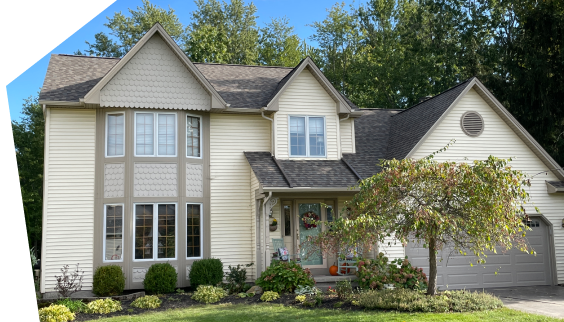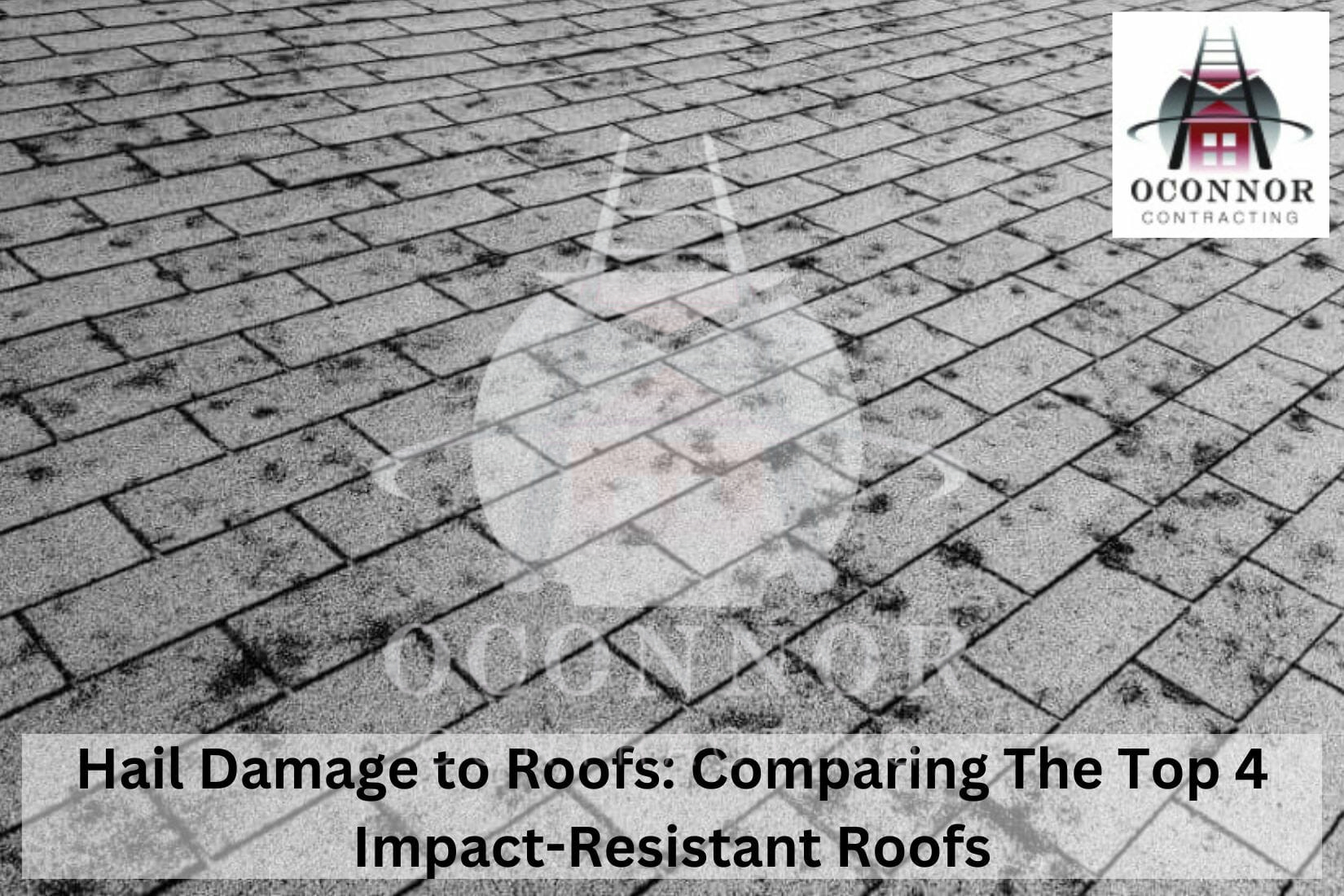Hailstorms are notorious for causing significant damage to property, especially roofs. So it’s incredibly helpful to invest in a hail-resistant roof that will help prevent multiple costly repairs. If you have a hail-damaged roof that’s beyond repair, it’s time to upgrade to one that can endure even the worst storms.
As a roof replacement expert at OConnor Contracting, I’m here to help you choose a tough and durable roof for your home. In this guide, I will compare the top four hail-resistant roofing materials with other helpful information.
How Much Hail Damage Leads To a Roof Replacement?
Roof damage can be a nightmare, especially when it leads to leaks and structural damage to your home. The extent of damage caused by hail varies depending on the size of hailstones and the duration and frequency of storms in your area. So it can be difficult for a homeowner or an inexperienced handyman to determine whether you need a new roof.
However, if you’re looking at multiple roof leaks or other issues like pest infestation or mold and algae in the attic, which can be signs of hail damage, it’s time to call a reputed local roofing contractor for a thorough roof inspection.
Generally, hailstones with more than 0.8-inch diameter lead to visible roof damage. You can check local news reports to know what type of hailstorms are frequent in your area. But it’s best if the professionals assess the damage and advise you on whether you need roof repairs or replacement.
If you have a hail-damaged roof and need a new one, it’s essential to know and compare the top hail-resistant roofing materials and pick the one that suits your requirements.
4 Best Hail-Resistant Roofing Materials
Several types of metal roofs, Class 4 asphalt shingles, and slate roofs are time-tested choices to prevent roof hail damage. Let’s explore their hail resistance along with the pros and cons.
#1 Corrugated Metal Roof
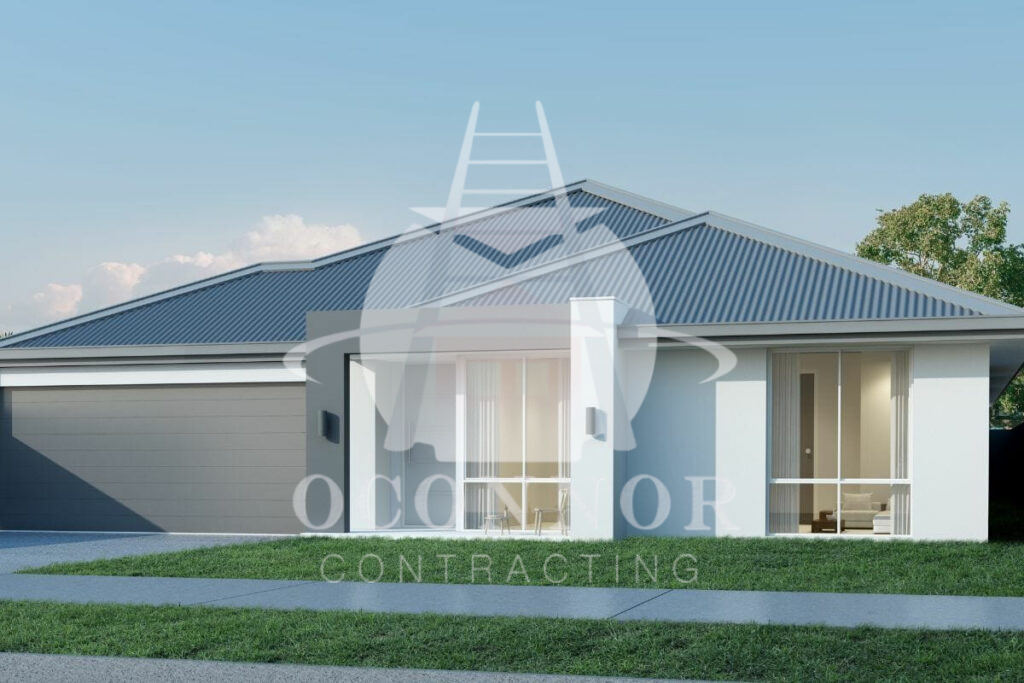
A corrugated metal roof is made from metal panels that are shaped into a wavy pattern that provides excellent wind and hail resistance. The design can also successfully hide cosmetic damage such as dents and scratches. If you choose 22 gauge corrugated panels (thicker than 24 and 26 gauge), they’ll provide hail damage protection for decades.
Pros:
Metal roofs are known for their long lifespan, often lasting up to 40 to 50 years or more with proper maintenance. Corrugated metal roofs specifically can withstand high winds, storms, and even hurricane-force winds due to their thick panels and wavy surface.
There are a lot of myths about metal roofs, one being they attract lightning. But the truth is, metals do not attract lightning. Lightening naturally tends to hit the closest structure in the area, which is usually the tallest or highest. Metal roofing panels are in fact exceptionally resistant to burning and help prevent the spread of fire in case of lightning and electrical hazards.
Another myth is metal roofs can heat up homes and buildings. Though metal roofs do heat up, they don’t transfer that heat inside your house. Instead, metal roofs provide remarkable insulation and reflect heat and UV rays. They are counted among the top energy-efficient roofing materials, suitable for all types of climates.
Cons:
Metal roofs can be more expensive than other roofing materials, although their long lifespan and low maintenance requirements can offset this cost over time. Further, metal roofs can also be very noisy during rainfall and hailstorms, but this can be mitigated by using appropriate insulating materials beneath the panels.
#2 Class 4 Impact-Resistant Shingles
Class 4 is the highest impact resistance level in roofing materials. Shingles falling in this category are tested and certified to withstand hailstones of up to two inches in diameter. These shingles are typically modified with fiberglass and rubber polymers, which makes them more flexible and better able to withstand high impacts.
Some famous Class 4 shingles are:
Pros:
You can get almost 40 years out of your Class 4 fortified shingles, which is higher than most types of asphalt shingles. The best part? These durable roofing shingles are relatively more affordable than other hail-resistant roofing materials. Plus, many insurance companies provide discounts on homeowners insurance premiums for homes with Class 4 asphalt shingles and other roofing materials.
Finally, you also have the option to explore a wide range of styles and colors, allowing you to select a shingle color to match the appearance of your roof and your home’s aesthetic.
Cons:
Although Class 4 shingles are durable, they require more maintenance than other hail-resistant roofs, such as metal and slate.
#3 Slate Roofs
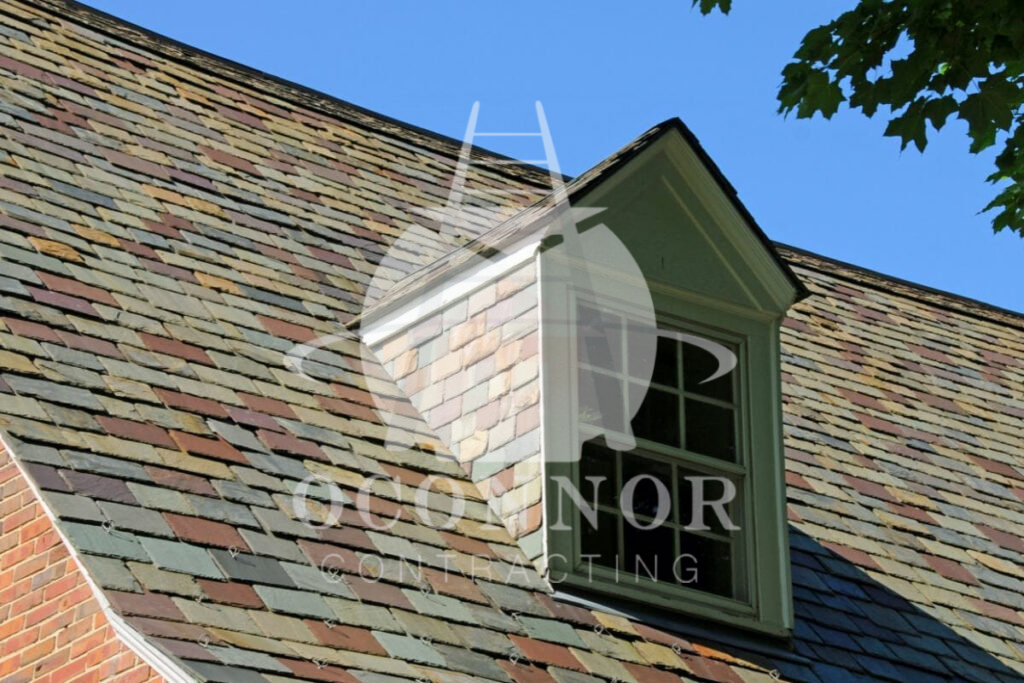
Slate is a luxurious and among the most durable choices to replace your hail-damaged roof with. Slate roofs are made from natural stone, which is highly durable and resistant to hail damage. These roofs are known for their unworldly longevity and classic, luxurious appearance.
Pros:
Slate roofs can last between 50 to 100 years, sometimes longer, making them an excellent long-term investment. The lifespan depends on the type and thickness of your chosen slate tiles.
Slate roofs are eco-friendly, cost-effective, and low-maintenance. These roofs might cost more than other hail-resistant roofing materials, but their beauty, weather resistance, durability, and energy efficiency make them a smart investment of a lifetime.
You can save money on power bills, receive tax rebates, and eliminate the need for too much upkeep and repairs as opposed to other types of roofs. The beautifully elegant slate roofs also enhance the resale value of a house, making it even more cost-effective if you ever want to sell your home.
Cons:
The initial cost to install slate roofs can be medium or high, depending on the specifications of your chosen slate tiles. Thicker and more colorful slate tiles tend to cost higher than common gray-colored slate or composite slate materials. Moreover, if your roof structure was designed to take the weight of lightweight shingles, you will require stronger structural support as slate roofs are quite heavier.
#4 EPDM Rubber Roof
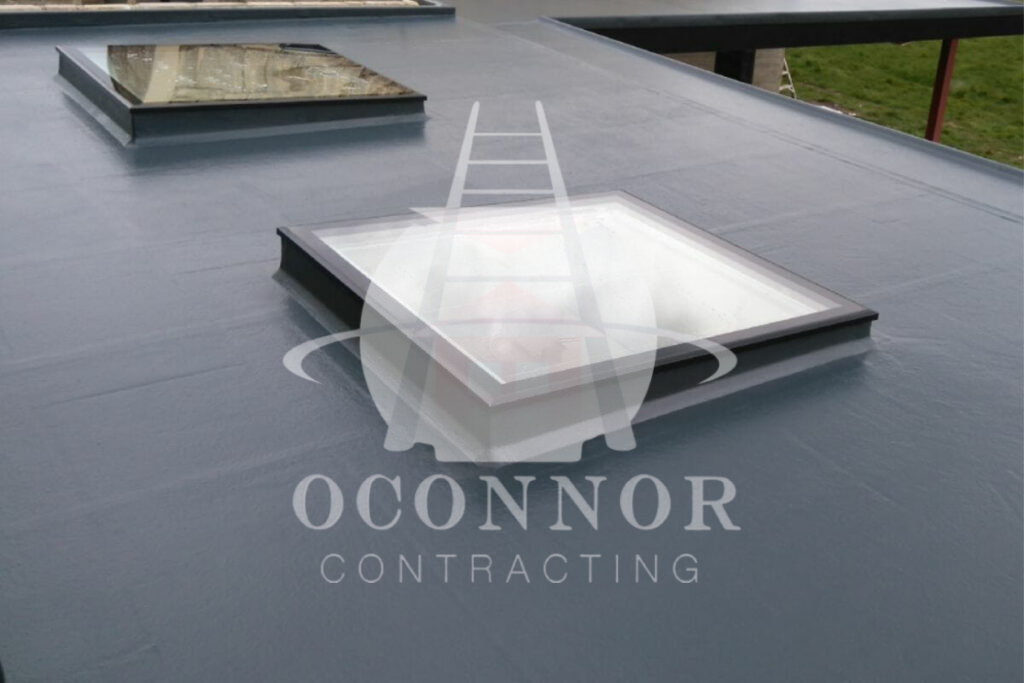
An EPDM roof is a single-ply membrane made of rubberized materials. It’s incredibly flexible and resistant to hail damage. If you have a flat or low-sloped roof of up with a slope of 1/12, EPDM can be a wise choice for your hail damage roof replacement project.
Pros:
The flexible EPDM membrane can withstand extreme temperatures without cracking or tearing. It’s also an excellent option for snowy areas due to its remarkable waterproofing properties. On average, an EPDM roof can stand strong for 30 to 40 years, depending on your local weather conditions. Further, you can get all these benefits at an affordable price point, as EPDM roofing systems generally cost less than other low-sloped and hail-resistant roofs.
Cons:
The biggest drawback of EPDM and all other membrane roofs is they are only suitable for roof slopes of up to 1/12. It’s not suitable for homes and buildings having a greater roof pitch or slope. Plus, it may not have the same visual appeal as other roofing materials, such as slate or metal. And if you live in a hot climate, you need to get this rubber roof in a cooler color by paying a little higher price, as it’s originally black, a color that’s known to absorb heat.
Things to Keep in Mind When Replacing Your Hail-Damaged Roof
When you’re getting started with your roof replacement project, there are several important things to keep in mind. First and foremost, it is crucial to hire a reputable and experienced roofing contractor who specializes in handling hail damage repairs. They should have a solid track record and be knowledgeable about the specific requirements for hail damage restoration.
Additionally, it is essential to thoroughly document the extent of the damage by taking detailed photographs and keeping records of the hailstorm’s date and time. This documentation will be helpful if you’re filing a hail damage roof replacement insurance claim. It’s also helpful to understand your insurance policy’s terms and conditions to ensure you are aware of any deductibles or coverage limitations.
Lastly, take the opportunity to upgrade your roof by choosing a top hail-resistant roofing material to avoid wasting time, money and effort on future repairs, claims, and replacements.
The best way to start off with your project is to consult a reputed local roofing contractor in your area and take advantage of a free estimate.
If your roof has been damaged by a recent hail storm in Western New York, reach out to our experts at OConnor Contracting.
Consult Your Reliable Local Experts for Hail Damage Roof Inspection and Repair
At OConnor Contracting, we’ve been fortifying roofs in New York for many years. As part of the local communities, we’re here to offer our help by providing free consultation to homeowners in Western New York. Our roof restoration and replacement experts are incredibly knowledgeable and experienced and can help you choose the best hail-resistant roofing material. Whether you have visible damage or suspect hidden issues, call us at (716)-600-7663 for a thorough storm damage roof inspection and a reliable estimate.
